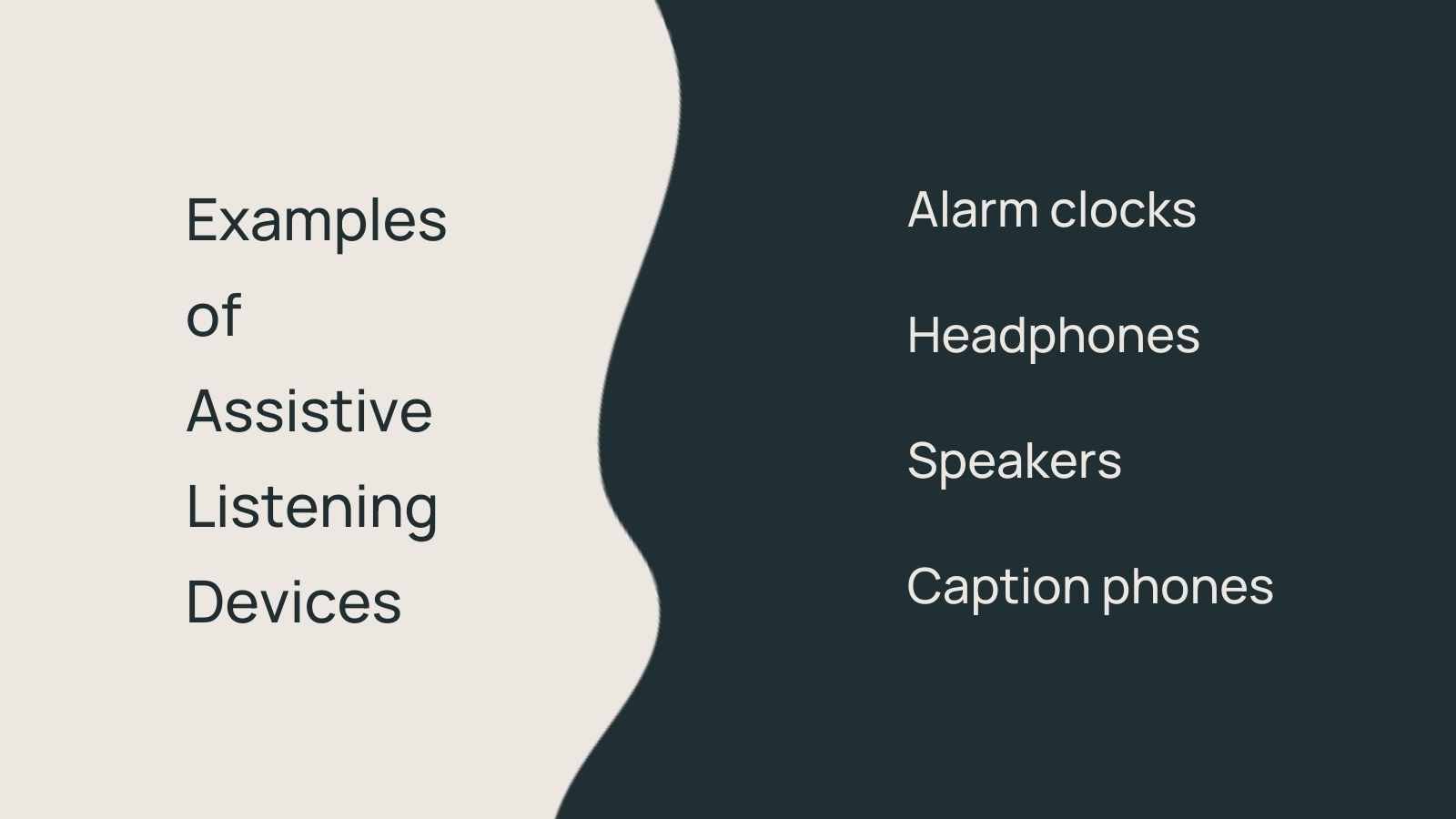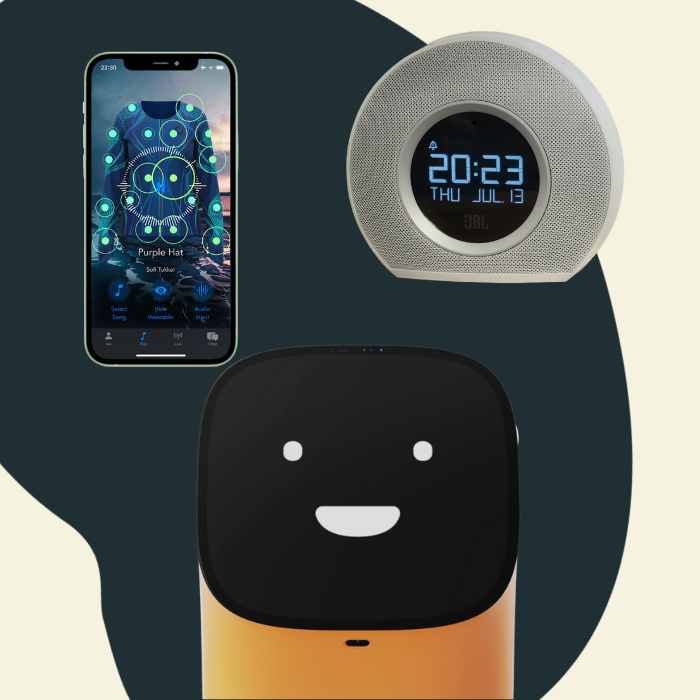Key Takeaways:
- Hearing is a sense that many take for granted, but fortunately there are assistive devices that can support those with hearing loss as they go about their day.
- Assistive devices range from alarms, phones, speakers to make TV more clear, and other devices.

There are so many ways to get additional support, beyond your hearing aids. To start, consider assistive listening devices (or, ALDs) which can provide support to people with hearing loss.
ALDs come in various forms and functions—some examples being alarms and speakers to caption phones and TV headphones—and have a wide range of situational uses. Depending on their needs, many people with hearing loss can benefit from assistive devices.

As an audiologist, I find that cochlear implant patients appreciate the added peace of mind of alerting them in a critical situation, such as a fire alarm. Scroll on to discover interesting new gadgets, such as one that creates an immersive experience to help patients with hearing loss experience music in a new way.
Below, an introductory list on helpful and novel assistive devices that can help with everyday life for those with hearing difficulties.
.jpeg)
1. Alarm clocks
Specialized alarm clock systems can help those with hearing loss to wake up on time and not sleep through the alarm clock. These devices feature bright flashing lights, loud auditory signals, or vibration under the pillow to alert the user when it is time to wake up. For example, this Sonic Alert vibrating alarm clock uses lights, sound, and vibrations to wake you up at the right time.
2. Fire alarms
Fire alarms designed explicitly for the deaf and hard of hearing typically use flashing lights or vibration, and they alert users when there is a fire in their home. For example, this Sonic Alert HomeAware Fire and CO Signaler incorporates an extra loud alarm, strobe lights, and a bed shaker to wake you up if a fire occurs at night.
3. Doorbell detection
Doorbell detectors make it easier for those with hearing difficulties to know when someone is at their door. These detectors link to a receiver which alerts users by flashing lights or vibrations when someone is at the door. The WP180USL Wireless Doorbell with Flashing Strobe and Push Button is one example.
.jpeg)
4. Caption phones
Next, consider a caption phone. This gadget enables a user to read captions on their phones during conversations, making communication much more accessible. Caption phones also have other helpful features, such as volume control, adjustable ringers, and amplified handsets. CapTel is available at no cost and requires only a signature from a hearing health professional to initiate the process.
5. TV headphones
TV ears use radio frequency technology to amplify audio from television sets without disturbing others around you. The headsets come with a transmitter box that picks up audio from the TV and sends it directly into the headset, where you can adjust sound levels according to your preference. You can listen to the TV at a level comfortable to you while your family listens to the volume at the level they prefer.
.jpeg)
6. IP Relay
Texting can offer ample support, too. Internet Protocol (IP) Relay systems allow people with hearing loss to communicate via text messages through an internet connection. The user connects with an Android or iPhone device over an internet connection (T-Mobile is one example), to a relay operator. Then, you'll type what you want to say and relay the message to your communication partner. Their response is then typed out so you can read it.
7. Mirai speaker
The Mirai speaker is specially designed to help those with hearing difficulty understand speech from the TV more clearly. The speaker's unique curved panel creates a clear, crisp sound and connects directly to a TV. Plus, its shape means that speech comes through more clearly, so volume doesn't need to be increased as much to understand your favorite shows. This product was recently launched in Japan, and 86% of users with mild to moderate hearing loss reported improvement in speech understanding when using the device.
%252520(2).jpeg)
8. Xander glasses
Xander glasses are designed specifically for people with hearing impairments who need assistance understanding conversations. As a helpful supplement for conversations, the glasses allow for a lag time of one to two words. This makes it easy for the wearer to keep their eyes on their conversation partners and glance at the text when needed. Multiple noise-canceling microphones around the frame pick up clear speech from the conversation and then send real-time captions directly onto the lenses via Bluetooth to quickly understand speech.
9. The Hearing Bot
Find additional support with the Hearing Bot. The Hearing Bot by Fountain Studio an AI-powered device designed specifically for people with hearing loss who need support in certain situations. Hearing dogs were the inspiration for this creation, and this device was developed by the Korean-based company Fountain Studio. Hearing Bot includes features like a vibrating alarm clock, a paired Smartwatch that alerts the user to dangerous situations, alerts to visitors at the door, or public transportation.
.jpeg)
10. The Sound Shirt
Wearable technology, like a shirt (yep, really) can also be a handy hearing support tool. The Sound Shirt is a unique garment developed by CuteCircuit—awarded one of Time's Best Inventions 2020—which enables people with hearing loss to experience sounds with physical sensations through 28 haptic sensors instead of using traditional headphones. Combining haptic feedback technology with sensors embedded into a shirt, it creates a unique experience that immerses people with hearing loss in a full sensory experience.
Conclusion
Assistive listening devices (ALDs), ranging from fire alarms to caption phones, make life easier for those with hearing loss by creating better accessibility across a myriad of settings including at home, 9-to-5 life, leisure activities, and so on. While the list takes a look at 10 examples, there are many other ALDs available with exciting products and capabilities.






